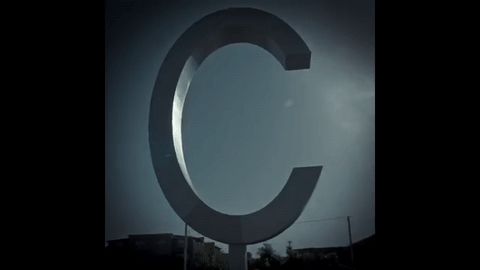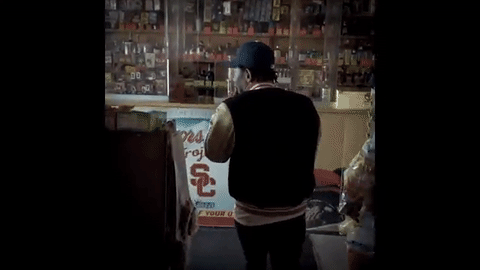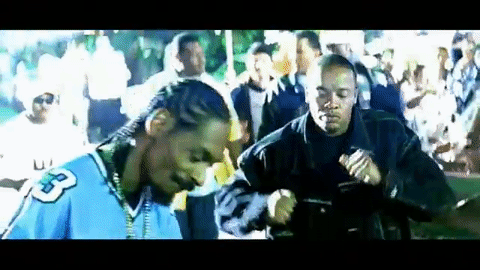top of page
G324 - Advanced Portfolio
George Pearson
Mossbourne Community Academy
Candidate number:5150
GSD Productions
Page Title
Hip hop music, also called hip-hop or rap music, is a music genre formed in the United States in the 1970s that consists of a stylized rhythmic music that commonly accompanies rapping, a rhythmic and rhyming speech that is chanted.
Early Days - Hip Hop originated in America in the 1970s in New York as a source of African American culture mainly taken up by the youth. Since its humble beginnings it has been able to become a global source of music and counter culture. It has been considered as a form of subverting the law as it was common around the Latin and African American youth which had been written off by the government around the 1970s. The hip hop genre was created as a form of protest against this image of hereditary groups. Creation of the term hip hop is often credited to Keith Cowboy, rapper with Grandmaster Flash and the Furious Five. However, Lovebug Starski, Keith Cowboy, and DJ Hollywood used the term when the music was still known as disco rap.
Harlem 1970
First Hip Hop record - 1979
Keith Cowboy later worked with the sugarhil Gang to create the first ever hip hop record 'Rappers delight' in 1979. However, much controversy surrounds this assertion as some regard 'King Tim III (Personality Jock)' by The Fatback Band, which was released a few weeks before 'Rapper's Delight', as a rap record.
Origins:
Hip hop's early evolution into a form distinct from R&B also, not coincidentally, occurred around the time that sampling technology and drum-machines became widely available to the general public at a cost that was affordable to the average consumer and not just professional studios. This allowed many young rappers to be able to create a beat to rap over in a rhythmic style which was adopted by many as they seemed to find the right 'flow'.
Technology being used to create
Hip Hop beats:
Introduction of Rapping:
Rapping, also referred to as MCing or emceeing, is a vocal style in which the artist speaks lyrically, in rhyme and verse, generally to an instrumental or synthesized beat. The roots of rapping are found in African-American music and ultimately African music, particularly that of the griots of West African culture. It has been influenced by the West African style of jazz comedy and call and response music which come together to create a rhythmic flow and inventive lyrics shown in Hip Hop music.
1980s Hip Hop - Introduction of more complex styles of Hip Hop. It started to merge with electro with the likes of Grandmaster flash and Africa bambaataa. As technology became more available to the public it became easier to merge the two forms of music to create a new genre.
Artsits (1980s) - Public enemy, Run DMC, LL cool J, KRS one, Ice T,
1990s Hip Hop - Mainstream Breakthrough: Nicknamed 'the year that rap exploded'. It was the most exciting development in American music in the last decade. MC Hammer was one of the most successful rappers of the early nineties and his album 'please hammer don't hurt em' went multi - platinum which showed the growth of the Hip Hop genre in the 90's. This decade also saw the ride of east coast vs west coast rapping which was seen as a contest of rapping ability (more on East coast vs West coast below). Hip Hop became the best selling music genre in the mid 1990s with 81 million CDs sold.



East Coast VS West Coast

The East Coast–West Coast hip hop rivalry was a feud from 1991 to 1997 between artists and fans of the East Coast hip hop and West Coast hip hop scenes in the United States, especially from 1994–1997. Focal points of the feud were East Coast-based rapper The Notorious B.I.G. (and his New York-based label, Bad Boy Records) and West Coast-based rapper Tupac Shakur (and his Los Angeles-based label, Death Row Records), who were both fatally shot following drive-by shootings by unknown assailants in 1997 and 1996.
Tupac vs Biggie smalls
The story goes that 2Pac (West Coast) was entering a recording studio and was shot five times and robbed of approximately $100,000 of jewellery. Since The Notorious B.I.G. (East Coast) was in the same building at the time, 2Pac maintained that he either had a hand in the robbery or that he should've known because the studio was in his area, where he is supposed to be safe. 2Pac released the following song and subsequent music video with vile lyrics aimed at B.I.G. and his 'crew' Junior M.A.F.I.A. as well Puff Daddy, his manager. Then the rivalry started. Eventually the two rapper were shot by unknown assailants in a drive by and then the feud began to cool down as rappers from both East and West Coasts called for peace.
Click here for more information and 'diss tracks' mocking artists
Hip Hop - Through the years
Globalisation of Hip Hop:
1980s LL cool J: I'm bad - This music video its not as inventive with its shots as it is shot at an earlier time. It focusses heavily on the visuals rather than camera techniques.
Mise en scene:
- Typical conventions of a Hip Hop music video: Rapper is surrounded by cars and girls
- Gang signs shown towards the camera
- Vibrant dance moves amongst a group
-Ghetto location (Compton) relates to the Hip - Hop die of 'starting from the bottom'
2011 Kanye West & Jay Z - Otis: This music video does not relate its music to its visuals which is a different style to Straight outta compton. It does however focus much of the video on lip syncing which makes it a good source for making the lip syncing in our video better. The use of props is heavily in use here with the inclusion of the car and the path that the car drives in attempts to relate to the beat of the music. We could try to incorporate this into our own work in sections of our song.
1990s NWA - Straight Outta Compton - The music video is a good example in terms of visual to lyrics relationship. The song uses lyrics such as 'with a gat (gun) that's pointed at your ass' go along with the shaky cam to suggest a frantic atmosphere that you relate with Compton. It uses a clever use of camera movement to set up a theme for the video of violence and being out of control.
Camera:
- Abundance of panning across the location
- Also includes low angle shots Rappers
- Variation of long a close up shots to change between rapper and dancers
- Establishing shots emphasise the setting
King Kunta - Kendrick Lamar
Editing:
- Slow motion takes of dancing to conform to the conventions of suaveness of Hip - Hop videos.
- Fast cuts between changing of setting that corresponds with the beat of the song.
Sound:
- Conforms to a Hip - Hop style video as it as it includes fast rapping and a rhythmic beat
- Sound clearly corresponds to the lip syncing of Lamar
Relationship between music and visuals
Each letter is on beat.
You will notice this in the video

The beat switches to a faster tempo and this is shown in the artists choreography

Relationship between lyrics and visuals
'I don't want you monkey mouth motherf*ckers sittin' in my throne again'.
Lyrics 'throne' is clearly shown as the artistic sitting on a throne surrounded by dancers.
Stuck a flag in my city, everybody's screamin' "Compton".
Constant reference to Compton in the video using location signs and billboards



Mise en scene:
- Girls wearing revealing clothing which relates to voyeurism
- Expensive cars to show that they are rich artists (started from the bottom mentality)
- Set in the streets to suggest thats were they are from
Editing:
- Slow motion takes of girls add to the idea of voyeurism.
- Split screen to contrast between artists and 'hood like' setting suggesting it is still a part of them
- On beat editing to keep the audience enthralled into the song itself
Dr Dre - Still D.R.E ft Snoop Dogg
Camera:
- High angle shots to show the artists surrounded by their friends.
- Low angle - tracking shots of women again relating to voyeurism.
- Panning across to show the setting that the video takes place in.
Sound:
- Constant beat in the song which the artists rap to and the people dance to.
- Lyrics are usually related to women, drugs, violence or roots.
- Some use of diegetic sound (Girls shouting and cars driving)
Relationship between music and visuals
Dancing to go along with the beat of the
song to conform to the effects that the
music has on audiences

Relationship between lyrics and visuals
'And I still got love for the streets, it's the D-R-E'.
Reference to the streets that they are surrounded by throughout the video.

bottom of page
